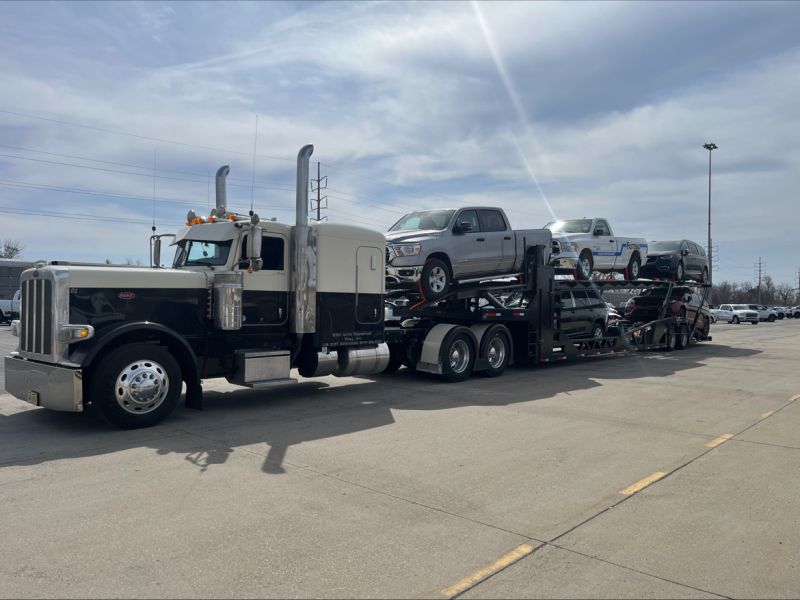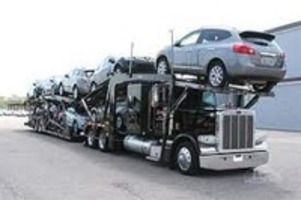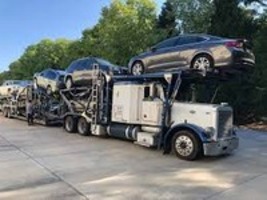Customs inspections are a crucial stop when shipping cars between borders. They ensure compliance and safety, but when delays arise at this stage How customs inspection delays affect shipping, the effect can snowball through the shipping timeline, pushing carriers and vehicle owners toward higher costs and late penalties.
This post explains how customs delays dent vehicle shipping, names the usual causes of lengthier inspections, and offers actionable steps to mitigate the impact. We’ll also highlight how Shipping Cars simplifies compliance and schedule reliability in the environment-sensitive, regulation-tight world of global vehicle logistics.
Customs Checks: The Last Stop in Shipping
Customs checks are the final gateway for car shipments. Inspectors verify emissions standards and safety requirements, cross-check ownership titles, and verify export permits. Once a car clears this round, it can board a flatbed, vessel, or rail car for the final leg of the journey.
If a unit is flagged for a random check or simply does not pass scrutiny, it is stopped cold until the matter is straightened out—holding up that vehicle and, quite possibly, the whole ship or trailer.
Customs inspections are critical for protecting international supply chains, but holdups can ripple through schedules. When a vehicle is selected for inspection, it must stop until every square is checked. A fresh defect, a slight mix-up in paperwork, or a misaligned entry can jam that stop for hours—sometimes days.
At whatever inspection dock the vehicle lands, the shipping clock freezes until the officer initials the final approval. Occasionally, headline notices cause freak delays—a new safety ruling, a sudden shift in emission thresholds. More often, the same predictable mix of mistakes keeps showing up, and a straightforward tally of those repeat errors can help reinvent the odds the next time documents cross a frontier.
1. Missing or Mistyped Documents
By a wide margin, the wrong figure in a commercial invoice, a blurred stamp, or a sheet that never made it, flips the shipping schedule to zero at the customs bench.
When a truck is called forward, the teacher’s summary of checkpoints suddenly reads like this:
- Title transfer in triplicate, every copy scarlet with a fresh, legible signature
- Proof of ownership—a never-creased $10 receipt the notary always, always sealed
- Customs declaration showing the zero in the right box so it never lands in the wrong ledger at midday
- Emissions reports and safety certificates sorted in currency that smells less like burnt coffee
One empty cell anywhere translates to revise-resubmit dot memo. When the printer disciples midnight for the third time this week, the clock you thought you outran rewinds a song. Spell-check, add extra embassy stamps if the map allows, and siren the fix-up queue.
At Shipping Cars, our goal is to help you prepare and file customs paperwork so that every form is complete and organized. When everything arrives at customs in perfect order, the chance of delays drops significantly the moment your vehicle lands.
2. Customs Backlogs and Shipment Volumes
Peak periods—usually holidays and certain weeks in the shipping calendar—cause customs facilities to queue more vehicles than the inspectors can manage at once how customs inspection delays affect shipping. When that happens, the countdown clock for processing tends to slow, and the entire shipping timetable can slide. Occasionally, customs may choose to fast-track certain vehicle types, nudging others further down the line.
The best way to manage these surges is to know when they typically occur and to plan ahead. The most effective moves are to secure your booking earlier and to allow extra calendar days for clearance.
3. Non-Compliance with Import Regulations
If your vehicle doesn’t meet the destination country’s import requirements, customs is likely to inspect it more thoroughly.
These standards might span safety, emissions, and even particular design details, and they’re rarely up for debate. Even a slight deviation can morph a simple approval into an endless hold, so reviewing the requirements up front saves a lot of time and headache.
When a vehicle doesn’t meet the import regulations at the border, the border agency can either delay it for extra verification or turn it away. Either situation translates to longer wait times, potential surcharge tariffs, and in some cases, the obligation to modify the car at your expense to get it through the gate.
To avoid those wrinkles, map the destination country’s import regulations, and ensure every detail of the car is in lockstep before it climbs onto the vessel. Shipping Cars simplifies those rules and double-checks that the car complies with local statutes.
 4. Spot Customs Inspections
4. Spot Customs Inspections
Customs can choose any container at any moment for a detailed examination of its compliance with export controls. Your manifests may be perfect and the car may satisfy every specification, yet an agent may pull it off for those extra eyes. Those examinations can lengthen transit when officers probe deeper to assure the car still meets regulations.
Since the selection for a random check is strictly chance, your only countermeasure is a file of immaculate paperwork and a vehicle that is entirely on the right side of the law.
We can’t eliminate customs inspections, but getting these documents organized ahead of time can still help speed things up once the agent starts stamping.
How Delays during Customs Inspection Impact Delivery Dates
When customs takes longer than planned, it can complicate shipping schedules, especially for vehicles that have a hard delivery deadline. Here’s what you need to watch for:
1. Wider Arrival Windows
The clearest outcome is a bigger gap between the delivery promise and the actual drop-off. If customs flags a vehicle for extra scrutiny How customs inspection delays affect shipping, transport stops cold until the agent clears it. A brief check might add a few days, but a deeper dive could extend the wait by several weeks. Anyone counting on the vehicle for a tight itinerary, whether it’s a family relocation or a business transaction, ends up chasing a moving target.
2. Ballooning Expenses
The calendar isn’t the only place you’ll feel the impact. Ports and terminals usually charge extra when a vehicle lingers on their docks or sits idle in a bonded store. Daily storage and demurrage costs kick in once the vehicle can’t roll, and the longer the hold the steeper the total. A shipping quote that seemed straightforward can swell by hundreds or thousands of dollars while you wait on customs to clear the lane.
At Shipping Cars, we collaborate only with vetted carriers who prioritize swift customs clearance to keep storage fees in check. Still, whenever customs inspections take longer than expected, unexpected costs can arise, often linked to those delays.
3. Risk of Damage or Loss
Extended customs holdups raise the risk of damage, either in terminal storage or while a vehicle is on the move. With every additional day spent in a terminal, the odds of a stray forklift or a careless move go up. Even a minor vibration may translate to a significant defect. Plus, the margin for a precise ready-sort shrinks. Misplacement is rare, but when timelines stretch, the chance of a vehicle going off-dock temporarily or wrongly is a risk worth weighing.
4. Effects on Business Operations
For dealers and importers whose entire resale strategy hinges on timing, customs delays can throw a carefully calibrated launch schedule off-kilter How customs inspection delays affect shipping. A late arrival often means missing the narrow window a customer agreed to, and a dealer left waiting risks losing a sale or, worse, sowing doubt in the brand. Lingers at the port become more than just storage line items; they represent lost demand and the expense of customers who might otherwise have signed contracts the moment they heard the shipment was on the water.
How to speed up customs inspections
Customs inspections are a normal part of international shipping, but a few smart steps can help keep them brief:
1. Make sure the paperwork is correct
Complete, accurate paperwork is your first shield against delays. Review every piece of the puzzle—title transfers, customs declarations, and compliance certificates—to confirm nothing is missing, everything is right, and all dates are up to date.
2. Know the import regulations
Once you decide to ship a vehicle, dig into the requirements for the destination country. The vehicle must satisfy safety, emissions, and any other local standards. The closer the vehicle is to those benchmarks, the lower the chance of customs hold-ups.
3. Schedule the shipment in advance
Give yourself room to breathe by reserving transport as early as you can. If an extra customs inspection crops up, the extra lead time means you can deal with it without missing deadlines.
4. Choose a solid shipping partner
Work with a trusted carrier like Shipping Cars whose team knows customs inside and out. An experienced importer will clarify regulations and handle the paperwork. Their expertise lowers the chance of expensive delays and keeps everything flowing smoothly.
Count on Customs Ready Cars to streamline your transportation from port to driveway. While customs inspections are always on the menu, you can minimize idle time by knowing the rules and never leaving paperwork to the last minute. Double-check that your wheels meet the local specs, fill the forms accurately, and lock in your shipment as soon as you can. When you team up with Customs Ready Cars, you gain not just shipping but a guide through the shifting jungle of international standards.
If you’d like to see the difference prep makes, jump over to Customs Ready Cars. We’ll design a shipping path that lets you focus on the road ahead.








